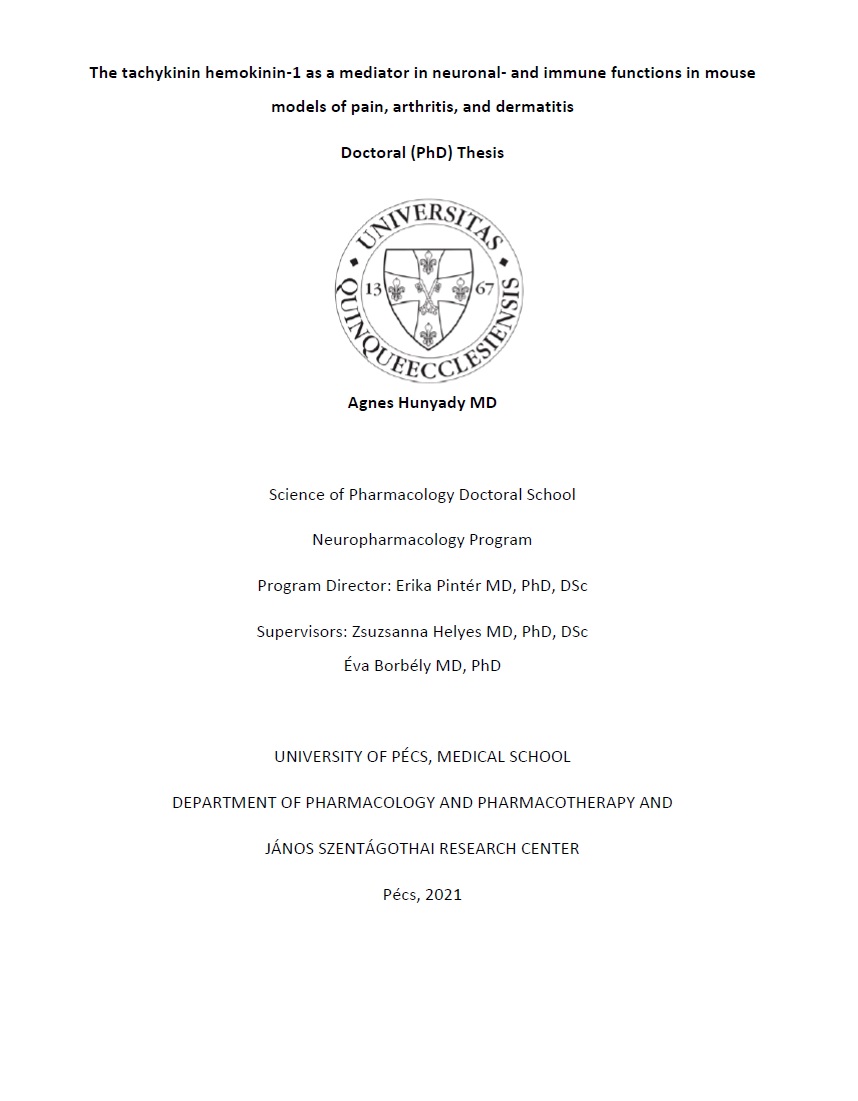The tachykinin hemokinin-1 as a mediator in neuronal- and immune functions in mouse models of pain, arthritis, and dermatitis
Abstract
Pain is one of the most common complaints for people seeking medical help(1). While in most
cases the underlying problem can be resolved, about 10-20% of pain becomes chronic(2). The
currently used main groups of analgesic drugs (nonsteroidal anti-inflammatory drugs: NSAIDs,
opioids and adjuvant analgesics) are not effective in every case, and long-term administration
can lead to a variety of side-effects(3). Many forms of chronic pain begin with (autoimmune)
inflammation; and damage to the nervous system potentially resulting in chronic pain can lead
to local inflammation as well(4, 5). Nociceptors transmit the pain stimulus from the periphery to
the spinal dorsal horn, where descending pathways from the brain modulate the sensation.
Sensitization of nociceptors in pathological conditions can occur through both peripheral and
central mechanisms. A subtype of the nociceptors is the capsaicin sensitive nerve ending which
expresses the Transient Receptor Potential Vanilloid-1 (TRPV1) ion channel on its surface(6).
These have a local efferent function called neurogenic inflammation when inflammatory
neuropeptides are released from the nerve endings(7). Crosstalk between the nervous- and
immune systems is substantial, as nociceptors release neuropeptides that regulate immune
cells(8); microglia as well as other immune cells influence the developing brain(9), and lymphatic
vessels have been discovered in the meninges(10, 11). Exploring these interactions and the
molecules playing a role in them could advance treatment of painful pathological conditions.

